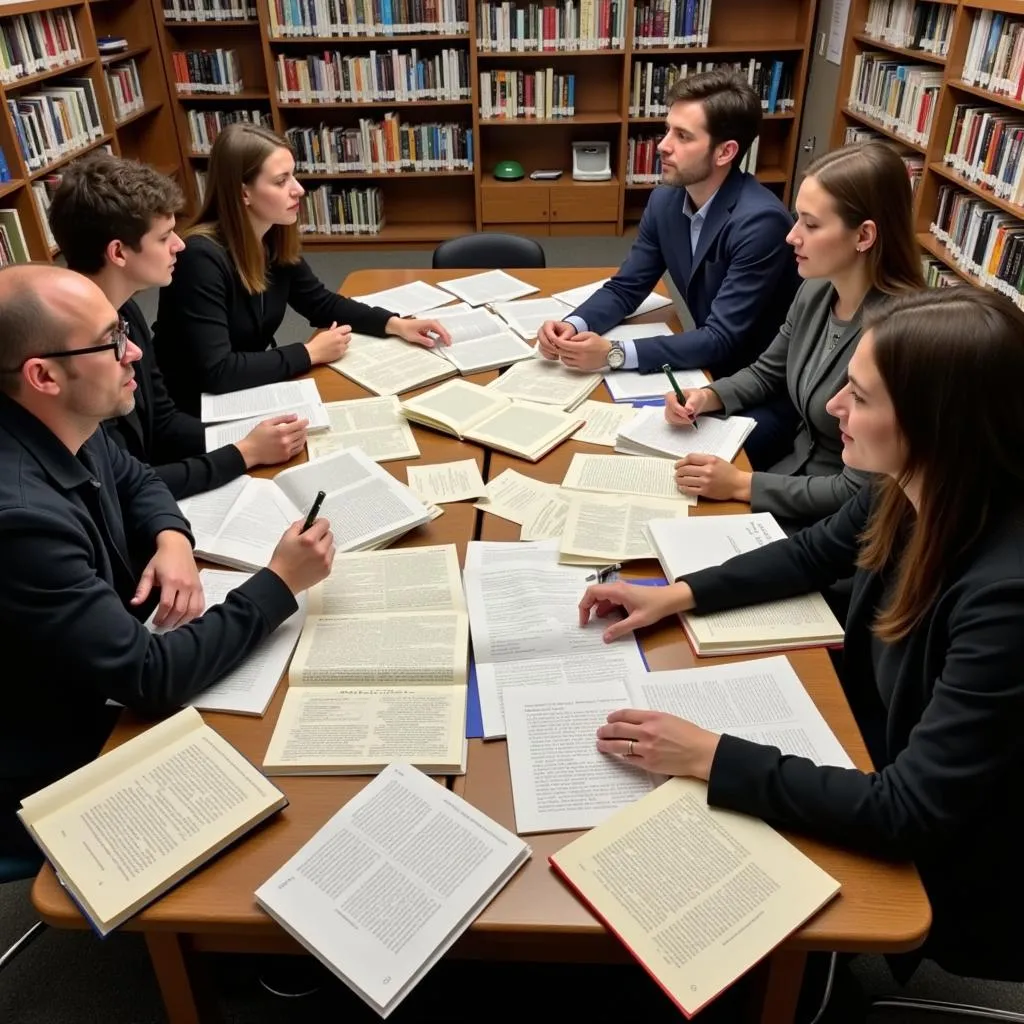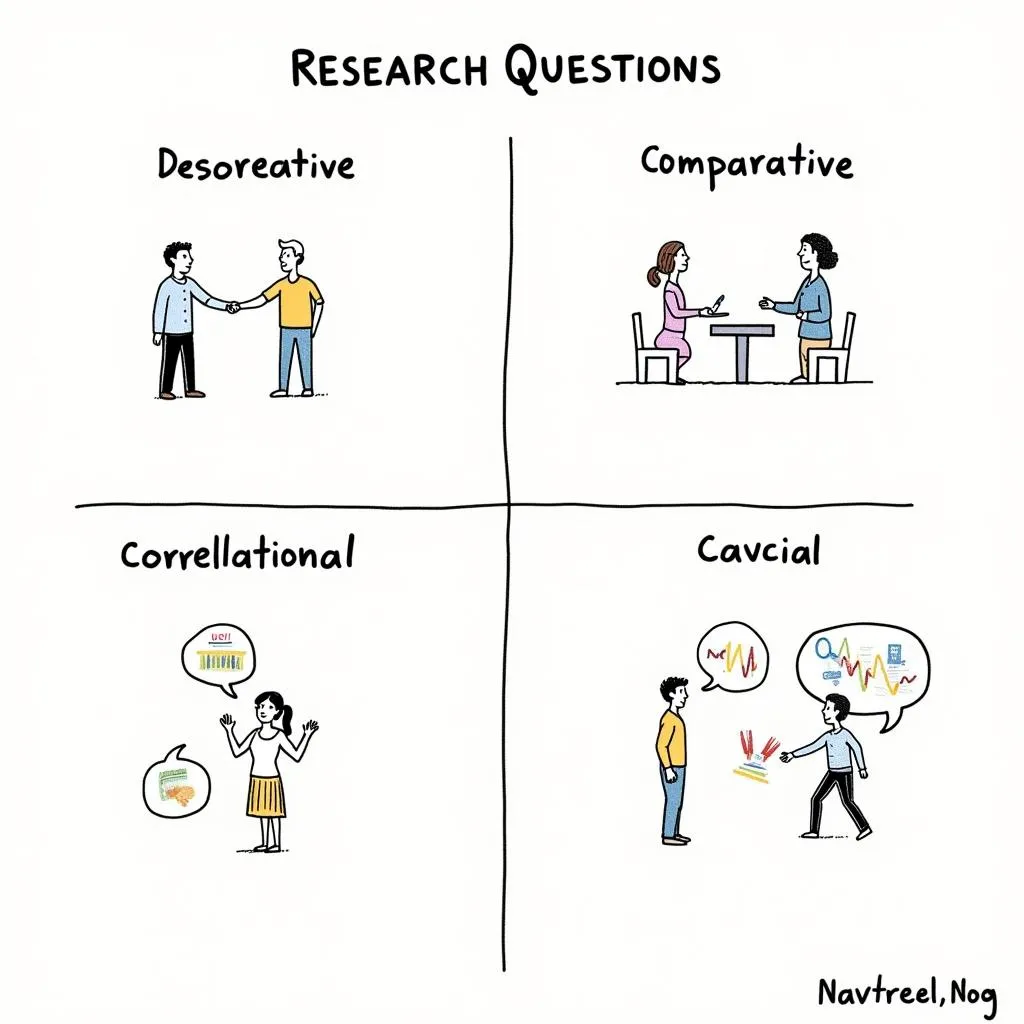Understanding research is key to navigating the world of academics and information. One of the first steps is knowing how to pinpoint the driving force behind a research article: the research question. This question is the heart of any study, dictating the path the researchers take. Knowing how to identify it can significantly enhance your comprehension of the material and its implications.
Why is Identifying the Research Question Important?
Before we dive into the “how”, let’s address the “why”. Recognizing the research question allows you to:
- Grasp the article’s purpose: It helps you understand the aims and objectives of the research, providing context for the entire study.
- Evaluate the relevance: You can determine if the research aligns with your interests or answers a question relevant to your own research.
- Critically analyze the methodology: Knowing the question allows you to assess if the chosen research methods are suitable for finding a valid answer.
- Interpret the results effectively: Understanding the driving question helps you make sense of the findings and their significance.
Key Places to Look for the Research Question
Now, how do you actually find this crucial element? There are several key places to focus your attention:
1. Introduction Section:
The introduction often explicitly states the research question, laying the groundwork for the study. Look for sentences that introduce the problem or area of investigation, often phrased as questions or statements that highlight a gap in existing knowledge.
2. Literature Review:
The literature review summarizes previous research, highlighting what is known and unknown. Pay attention to statements that point out inconsistencies, limitations, or unexplored areas within the existing literature. These often directly lead to the formulation of the research question.
 Researchers reviewing academic papers and highlighting key points
Researchers reviewing academic papers and highlighting key points
3. The Study’s Purpose or Objectives:
Many research articles clearly state the study’s purpose, aims, or objectives. These statements, often found at the end of the introduction or the beginning of the methods section, can reveal the central question guiding the research.
4. Hypotheses or Research Aims:
Some studies, particularly in quantitative research, will present hypotheses or specific research aims. These are testable predictions or statements that directly stem from the research question.
5. Discussion and Conclusion:
While not always explicitly stated here, the discussion and conclusion sections often revisit the research question, discussing the findings in light of the initial inquiry. Pay attention to how the authors interpret their results and what implications they draw, as this can provide clues about the original research question.
Recognizing the Different Forms of Research Questions
Keep in mind that research questions aren’t always presented as straightforward questions. They can take various forms:
- Descriptive: Seeking to describe a phenomenon or situation (e.g., What are the characteristics of…?).
- Comparative: Aiming to compare two or more groups or variables (e.g., What are the differences between…?).
- Correlational: Exploring the relationship between two or more variables (e.g., Is there a relationship between…?).
- Causal: Investigating cause-and-effect relationships (e.g., Does X cause Y?).
 Diagram illustrating different types of research questions with examples
Diagram illustrating different types of research questions with examples
Tips for Effective Identification
Here are some additional tips to help you effectively identify research questions:
- Look for keywords: Pay attention to terms like “investigate,” “examine,” “explore,” “determine,” or phrases like “the purpose of this study is…” These often signal the presence of a research question.
- Focus on the “gap”: Researchers often highlight a gap in existing knowledge or a specific problem that their research aims to address. Identify this gap, as it will lead you to the research question.
- Consider the research methods: The methods used in the study can offer clues about the research question. For instance, a survey likely aims to answer descriptive or correlational questions, while an experiment might explore causal relationships.
Conclusion
Mastering the skill of identifying the research question within an article is crucial for efficiently navigating and critically evaluating research. By knowing where to look and recognizing the various forms it can take, you will be well-equipped to unlock the core message of any research article you encounter.
Need help with your research journey? Contact us!
Phone: 0904826292
Email: research@gmail.com
Address: No. 31, Alley 142/7, P. Phú Viên, Bồ Đề, Long Biên, Hà Nội, Việt Nam
We have a 24/7 customer support team ready to assist you!